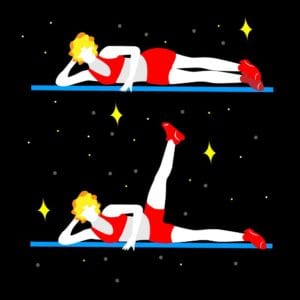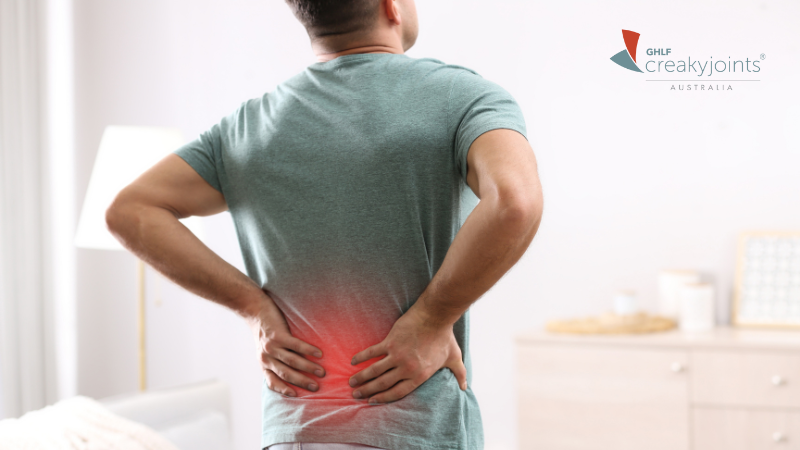

Regular exercise is one of the best things you can do to treat buttock pain that’s occurring because of arthritis or injuries to your lower back or hips.
“Any form of arthritis that affects the hips or lower back can cause buttock pain,” says Claudette Lajam, MD, orthopedic surgeon with NYU Langone in New York City.
If you’re already diagnosed with arthritis and are experiencing buttock pain that’s new or different, it’s important to let your doctor know. You might have an additional kind of arthritis or injury alongside your current diagnosis. Learn more about buttock pain causes.
Step one is following your arthritis treatment plan, says Dr Lajam. Taking your medication as prescribed and maintaining a healthy weight can help relieve buttock pain caused by arthritis. Your doctor may recommend steroid injections in affected joints to help relieve the pain.
These targeted exercises, recommended by Dr Lajam and physical therapist Colleen Louw, PT, spokesperson for the American Physical Therapy Association (APTA) can help relieve buttock pain by strengthening the muscles in your buttocks as well as those that surround the joints in your hips and lower back, which can also contribute to the pain.
Targeted exercise therapy has been proven to be an effective way to manage conditions such as axial spondyloarthritis (a category of arthritis that includes ankylosing spondylitis). In fact, many people with this form of arthritis and similar conditions find that targeted exercises help to keep their pain at bay and that the pain increases if they stop doing regular exercise.
If you’re new to exercise, always talk to your treating doctor before starting. Your doctor, exercise physiologist or physical therapist can make sure the exercises are safe for you. They can also show you how to do modified versions of these exercises while sitting in a chair or even laying in bed if that’s more appropriate for you.
Start slowly and move gently. Don’t worry if you can’t move or stretch very far, it’s not a competition. The key is to keep your movements controlled and to perform them regularly. If any activity increases joint pain, and if pain continues for several days after exercise, it’s time to stop and seek advice from relevant members of your healthcare team.


Knee to Chest
This exercise works your lower back, front of your hip and inner thigh.
- Lie on your back on the floor with your legs extended straight out.
- Bend one knee and grasp your shinbone with your hands.
- Gently pull your knee toward your chest as far as you’re comfortable.
- Hold the stretch for 20 to 30 seconds and then relax for 20 to 30 seconds.
- Repeat on the other side; then repeat the entire sequence four times.
Tip: Keep your lower back pressed into the floor.

Piriformis Stretch
This exercise opens the hips, which can help relieve buttock pain from sciatica.
- Lie on your back with knees bent and feet flat on the floor.
- Cross one leg on top of the other, so one ankle is resting on the opposite knee.
- Grab through the legs and pull the bent-knee leg up toward your chest until you feel a stretch in your buttock and hip.
- Hold the stretch for 20 to 30 seconds, then relax for 20 to 30 seconds.
- Repeat on the other side; then repeat the entire sequence four times.
Tip: You can use a looped towel to pull the leg up.

Hamstring Stretch
This exercise works the back of your thigh and behind your knee.
- Lie on the floor with both knees bent.
- Lift one leg off of the floor and bring the knee toward your chest. Clasp your hands behind your thigh below your knee.
- Straighten your leg and then pull it gently toward your head until you feel a stretch. (If you can’t clasp your hands behind your leg, loop a towel around your thigh. Grasp the ends of the towel and pull your leg toward you.)
- Hold for 20 to 30 seconds and then relax for 20 to 30 seconds.
- Repeat on the other side; then repeat the entire sequence four times.
Tip: Don’t pull at your knee joint.

Hip Abduction
This exercise works your outer thigh and buttocks.
- Lie on your side with your right leg on top and the bottom left leg bent to provide support.
- Straighten your top leg and slowly raise it to 45°. Keep your knee straight, but not locked. Hold for five seconds.
- Slowly lower your leg and relax it for two seconds.
- Repeat up to 8 to 12 times, then switch to do the exercise on the other side.
Tip: Do not turn your leg in order to raise it higher. The outside of your thigh should be lifted toward the ceiling.

Bird Dog Stretch
This exercise works your lower back and your buttocks.
- Start on all fours on the floor, with your shoulders directly over your hands and your hips directly over your knees.
- Raise your right arm out so it’s at shoulder height and level with the rest of your body.
- With your right arm still up, raise your left leg straight back so it’s level with the rest of your body, tightening the muscles in your buttock and thigh. Hold for 15 seconds.
- Repeat on the opposite side, raising your left arm and then your right leg.
Tip: Keep your stomach muscles tight and your back flat for balance.

Sitting Rotation Stretch
This exercise works your buttocks and the oblique muscles in your core.
- Sit on the floor with both legs out in front of you.
- Cross your right leg over your left leg so your right foot is outside your left thigh.
- Twist your torso toward your bent leg, putting your right hand behind you for support.
- Hook your left arm around your right knee and use it to help you twist further.
- Look over your right shoulder and hold the stretch for 30 seconds.
- Repeat on the other side, then repeat the entire sequence four times.
Tip: Sit up tall and keep your buttock bones (sit bones) pressed into the floor during the stretch.

Standing Iliotibial Band Stretch
This exercise works the outside of your hip.
- Stand next to a wall for support.
- Cross the leg that is closest to the wall behind your other leg.
- Lean your hip toward the wall until you feel a stretch at the outside of your hip. Hold the stretch for 20 to 30 seconds.
- Cross the leg that is further from the wall behind your other leg.
- Repeat on the opposite side; then repeat the entire sequence four times.
Tip: Don’t lean forward or twist at the waist.
Keep Reading
- Buttock Pain: Is Arthritis Causing It?
- Exercise Is Critical for My Arthritis Pain. When COVID-19 Messed Up My Regimen, Here’s How I Fixed It
- How To Exercise Right When You Are Stuck At Home With Arthritis
- Managing Exercise, Diet, and Stress
- Will The New Opioid Prescribing Rules Affect Your Arthritis Pain Management?
This article has been adapted, with permission, from a corresponding article by Teresa Dumain on the CreakyJoints US website. Some content may have been changed to suit our Australian audience.




